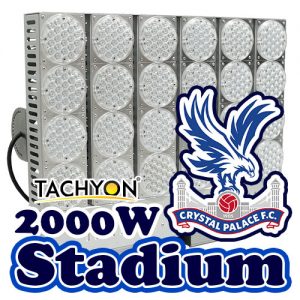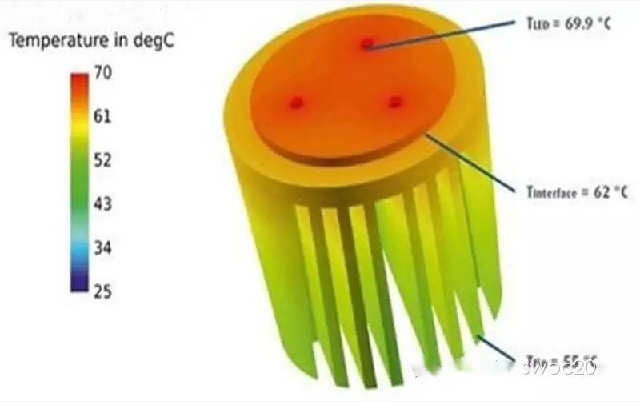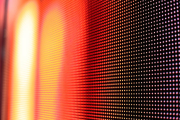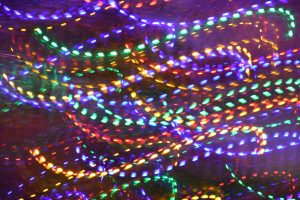The light Output Rate Determines the Application Degree of the LED Light Source
The commonly used single chip system RAM test method LED is called the fourth generation lighting source or green light source. It has the characteristics of energy saving, environmental protection, long life and small size. It can be widely used in various fields such as indication, display, decoration, backlight, general lighting and urban night scenes.
In recent years, some economically developed countries in the world have launched fierce technological competitions around the development of LEDs.
LED lamps and traditional lamps have a completely different structure. And the structure plays a key role in exerting its characteristics. Modern LED lamps are mainly composed of five parts: LED light source, optical system, driver, radiator, and standard lamp interface.
Analysis of Radiation Loss During LED Use
In the chip, the refractive index can be increased to more than 1.8 by doping the nano-phosphor in the silica gel. This can reduce the light scattering, improve the light output efficiency of the LED. And effectively improve the light color quality. Usually, the size of the phosphor is above 1um and the refractive index is greater than or equal to 1.85. While the refractive index of silica gel is generally about 1.5. Due to the mismatch of the same refractive index between the two and the size of the phosphor particles is much larger than the light scattering limit (30nm), there is light scattering on the surface of the phosphor particles. That reduces the light extraction rate.
At present, white LEDs are mainly realized in three forms:
- The combination of red, green and blue LEDs is used to emit light, that is, multi-chip white LEDs.
- Using blue LED chips and phosphors, white light is obtained by complementing blue light and yellow light. Or use a blue LED chip with red and green phosphors. And obtain white light by mixing the blue light emitted by the chip, red light and green light emitted by the phosphor.
- Use the near-ultraviolet emitted by the ultraviolet LED chip to excite the three-color phosphors to obtain white light.
The second method is widely used at present. The blue LED chip and phosphor powder are used to complement each other to obtain white light. Therefore, the improvement of the lumen efficiency of the LED by such a chip depends on the initial luminous flux and light maintenance rate of the blue chip.
The initial luminous flux of blue LED chips is improved with the development of epitaxy and substrate technology. The lumen maintenance rate is maintained by the packaging technology. The key to maintaining the lumen maintenance rate is to improve the internal environment for conduction and heat dissipation. This involves the key technology of LED packaging: low thermal resistance packaging process and high light extraction rate packaging structure and process.
LED chip heat dissipation
At present, the luminous efficiency level of existing LEDs is relatively low. Since 80% of the input electrical energy is converted into heat, the heat dissipation of the chip is very critical.
LED package thermal resistance mainly includes material internal thermal resistance and interface thermal resistance. The function of the heat dissipation base is mainly to absorb the heat generated by the chip and conduct it to the thermal resistance to achieve heat exchange with the outside world. Reducing the interface and interface contact thermal resistance and enhancing heat dissipation are also key. Therefore, the choice of thermal interface material for the chip and the heat sink base is very important. Low temperature or eutectic solder paste or silver paste is currently used.
At present, the thermally conductive adhesive used in the most advanced LED chips is a thermally conductive adhesive doped with nanoparticles. That effectively improves the interface heat transfer, reduces the interface thermal resistance, and accelerates the heat dissipation of the LED chip.
Photon Radiation Loss
During the use of LEDs, the loss of photons generated by radiative recombination when they are emitted outwards mainly includes three aspects:
- The internal structural defects of the chip and the absorption of the material, the reflection loss of photons at the exit interface due to the difference in refractive index.
- Total reflection loss due to incident angle greater than the critical angle of total reflection.
- By covering the surface of the chip with a transparent adhesive layer with a relatively high refractive index, the loss of photons at the interface is effectively reduced. And the light extraction rate is improved.
 Therefore, it is required to have high light transmittance, high refractive index, good thermal stability, good fluidity, easy spraying. And at the same time to improve the reliability of LED packaging. It is required to have low hygroscopicity, low stress and aging resistance.Moreover, usually white LEDs also require the blue light emitted by the chip to excite the phosphors to synthesize light. In the encapsulant, phosphor powder should also be added for color mixing. Therefore, the excitation efficiency and conversion efficiency of phosphors are the keys to high light efficiency.
Therefore, it is required to have high light transmittance, high refractive index, good thermal stability, good fluidity, easy spraying. And at the same time to improve the reliability of LED packaging. It is required to have low hygroscopicity, low stress and aging resistance.Moreover, usually white LEDs also require the blue light emitted by the chip to excite the phosphors to synthesize light. In the encapsulant, phosphor powder should also be added for color mixing. Therefore, the excitation efficiency and conversion efficiency of phosphors are the keys to high light efficiency.








